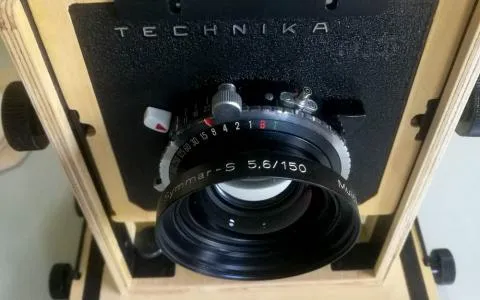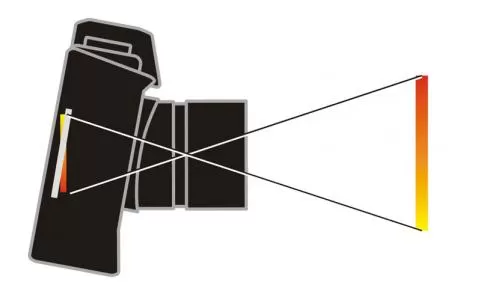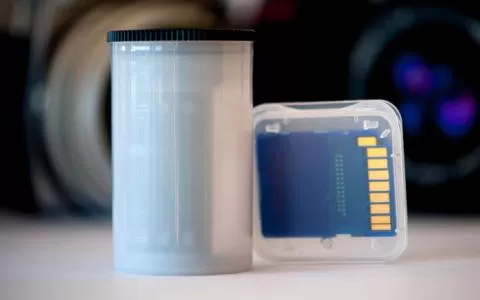I supported a Kickstarter project where two guys are building an affordable large format camera, and soon I will own a 4x5 camera. That has raised quite a few questions.
One thing has been the images themselves, but I am also fascinated by the workflow of these people. Using often slow and meticulous processes, which are cumbersome and elaborate in many ways, but also very elegant and rewarding in themselves. And they get some very beautiful and powerful results. I wanted to try that, so I supported the UK based project The Intrepid 4x5 Camera - An Affordable Large Format Camera on Kickstarter. The guys - simply Max & Eddie - also have a dedicated website for the camera with a blog and additional info. I have had great success funding Kickstarter projects before with both the Petzval lens and the Camera Obscura as very satisfying results.
I knew a bit about large format, having read a few books that touched on the subject and seen a few documentaries. During my work as a magazine editor, I had also worked with large format photographers a few times and witnessed the process up close.
So I'm not a total stranger to film backs, bellows, perspective correction and such, and from my long history as a film photographer I know about working with analog media, measuring light, exposing manually and I also know about film handling, development and doing prints.
But now I have an actual large format camera on the way, and diving into the details and the gear needed, I see the truth in the old saying: the more you know, the less you realize you know.
So I have started learning as much as I can without having the actual camera.
The camera
The camera I get is essentially the body of a large format camera, which in the case of these beasts very simply put is a couple of frames with a bellows suspended between them. For the camera to do anything sensible, you will need a lens, a shutter and a film back to hold the actual film, which is single, large sheets – in this case 4 by 5 inches.
The shutter and the lens are mounted on a lens plate, which is stuck onto the front of the camera. Aperture is of course operated fully manually as is the purely mechanical shutter, which is spring driven and needs to be cocked. Focus is done by moving the lens back and forth in relation to the film plane and the sharpness and composition is assessed via a glass plate in the rear of the camera where the image is projected upside down.
Thoughts on expenses
When I started looking into owning a large format camera I soon realized that it was going to be expensive. Everything about large format is large – also the prices, even when you try to go cheap.
Sheets of film are typically about 100 US$ per 25-50 depending on what brand you choose and where you buy, and development will easily run you 5-10 even 15 US$ per negative. Yes, that's for one image!
But that's nothing compared to the prices for the gear – lenses in particular. New lenses are extremely expensive, and one of the only shops in Copenhagen that lists large format lenses has a price list starting at about 3,500 US$ and ending at well above 10 grand... for the lens!
So I soon realized that used was the way to go for me, and even though some of the used lenses are expensive too, it's possible to get a used large format lens for as little as a couple of hundred dollars if you're not too critical.
The large format cameras are simple and complex at the same time. It's pretty obvious how they work, but the mechanics still seem complex with all the buttons and knobs on the camera. In spite of this they are actually quite simple. There's no electronics at all and no form of automation anywhere.
But once you start digging into the actual assembling and setting up of a camera, you realize that it's a world of its own, and that there's quite a lot of standards and quite a lot of things to take into consideration when equipping your camera.
Film backs
The film back is a flat container than can hold one or two sheets of film – one on each side when it's two. You turn over the back to shoot the second sheet of film. The film is protected from light by a thin plate, which is stuck into the back after the film has been mounted. You slide the back behind the glass when you are ready to shoot. Once the back is in place on the camera, the protective plate is removed, and the film is ready to be exposed. When exposed, the plate is reinserted and the back can be removed. You now have an exposed sheet of film, ready to go to development.
Plates/boards
Since the back and the front of the camera itself are just frames, you also need something to hold the lens. This is usually referred to as a lens board or a lens plate.
The board is a simple wood or metal sheet with a hole in it for the lens. The board is mounted on the front frame of the camera. Since this is really old technology, there's a lot of shapes and sizes to these boards, but most current cameras seem to use the Linhof Technika standard, which is also doubled by other brands like Wista. Boards seem to be fairly simple, and making boards or adapters yourself shouldn't be impossible.
Lenses
Lenses are generally pretty large, and since we are talking large format, the focal lengths are not as we usually interpret them. The fairly common shortest focal length of 90 mm is the equivalent of a wide angle around 26 mm on a full frame 35 mm camera. A normal lens would lie in the 200 mm range and for a short portrait lens, you'd need a 250-300 mm lens.
Lenses aren't that bright either. f/5.6 is very bright and f/8 seems more like the norm. But remember that we are talking large format here, so the actual effect of the lens is actually more like a very bright prime on a 35 mm camera. We are still talking long exposures here, and large format cameras are not action cameras.
Shutters
That leads us to the shutter. The shutter is an integral part of the lens – built with the lens or added literally into the lens. The shutter is a leaf shutter and has to be placed somewhere inside the lens, so many lenses are made from two parts (some even more), and are assembled with the shutter between them.
The shutter has an open state where it's fully open while you compose and focus, and once that is done, you close it, insert your film and expose.
Shutters can be an integral part of the lens, but most seem to be separate, and a brand such as Copal is very common. The shutter is mechanical and spring driven, and needs to be cocked before it's released, which is often done with a mechanical wire release.
Film
The film is bought in sheets, and needs to be loaded into the film backs. You do this in a dark chamber or in a bag.
Once loaded the film stays in the back until it's being developed. Development is done by the photographer in a darkroom or in a lab.
Labs that do 4x5 are not common here in Copenhagen, but can be found. As mentioned they aren't cheap either, but I'll have to see how frequent a visitor I'll become.
Scanning
I will eventually want to digitize my large format negatives, and the easiest way to do that is probably either by using a converted flatbed scanner or by simply taking a digital picture of the slide or negative or maybe several pictures, which can be stitched together.
That also remains to be decided. I won't do much before I have shot my first images and had them developed... sometime after March 2015 where the camera is planned to ship from the UK.






